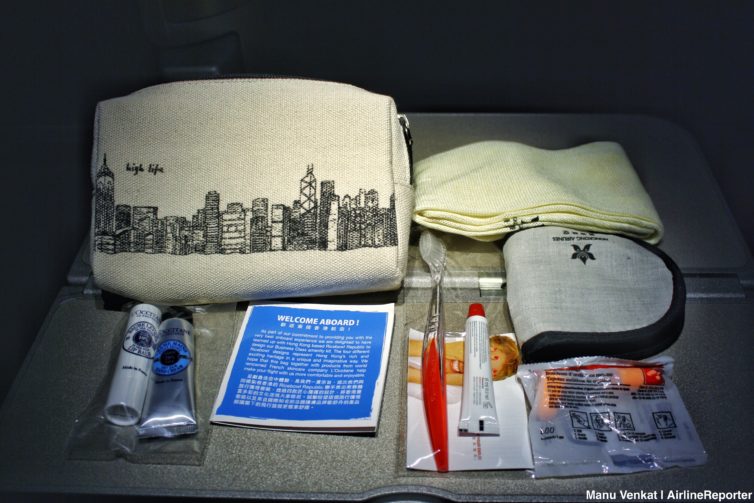
Over the years I have collected a lot of different airline amenity kits. Like, a lot, a lot. Even after giving many away to friends and letting house guests use whatever they want, I have more than I need, all living in some tubs, in my closet. I have always felt that they could be living a better life — doing good in the world. Sure, the containers are cool and I love my collection, but what is the end game here? Show them off when friends and family come to visit (a minority few would care)? Keep them around to pass down to future generations (they probably wouldn’t appreciate how cool they are)? Nah, I think I can do better. For a while I have thought about donating them to a good cause, but I wasn’t sure how. Now, I think I do — and I am taking you along with me!
I recently moved out to lovely Kitsap County (west of Seattle — a ferry ride away) and my “real” job gives me the opportunity to connect with non-profits in my community. Recently, I visited the local food banks and I realized that they all had a section that gave out toiletries. Some were well stocked, but many were not. Bingo! I have the supply…they have the demand.
Then my mind kept going. I bet many of you fine folks also have amenity kits that you collect, and maybe you wonder if there is something more you could be doing with them. If so, then I would like to help you find them a good home. Keep reading to find out how.
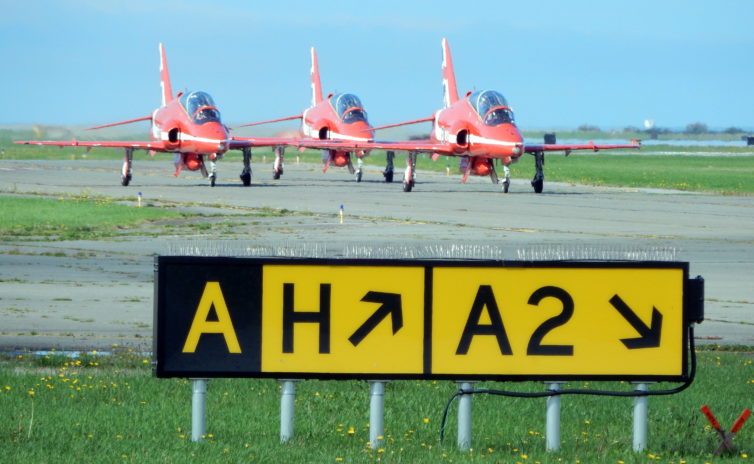
Truly a first-world problem: Do I livestream the arrival of the Red Arrows on my phone or capture the footage on my digital camera? – Photo: John Jamieson
Since the mid-1960s, the Royal Air Force Red Arrows have been the United Kingdom’s premier aerobatic display team. Under the RAF banner, the squadron has visited 57 countries and flown nearly 5,000 display shows.
In 2019, as part of their 55th-anniversary celebrations, the Red Arrows made their long-awaited return to North America. Following three days of position flying across the North Atlantic, the team arrived in Halifax on August 7th. After performing in New York, Chicago, Toronto, and Dallas, the team transitioned over to the West Coast.
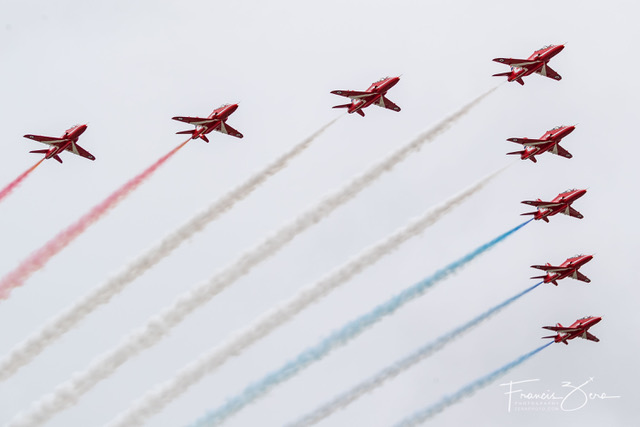
AR writer/photographer Francis was also lucky enough to snap a few photos when they were in Seattle
With receptions planned in the Pacific Northwest, AirlineReporter was invited to the Red Arrows Arrival Event in Vancouver, BC. I was fortunate to be in town during their visit and eagerly accepted the invitation.
Before getting into the meat of the post, yes I do actually have some Red Arrows swag to give away. For a chance to win, keep reading and some swag could be on your way! Now, a quick history lesson.
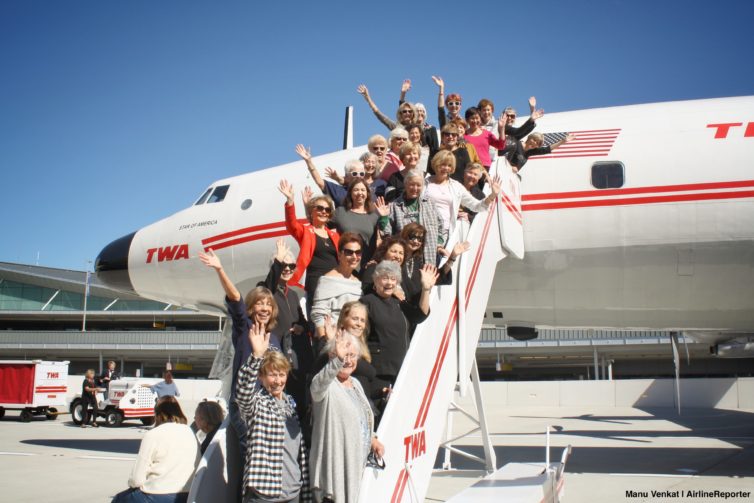
It’s been almost twenty years since TWA folded, but some of its employees still stay in touch. Every year, the Silver Wings organization of former TWA flight attendants hosts a get-together where they celebrate their shared history. The meetings usually rotate between U.S. cities, and this year there was only one logical choice: New York, thanks to the awesome new TWA Hotel that opened in May. If you’re one of the few AvGeeks out there who haven’t heard about it, the hotel is built around Eero Saarinen’s iconic TWA terminal at JFK and features historical displays, a rooftop pool with tarmac views, and more.
We got to join in for the Silver Wings meetup, and it was as awesome as we were hoping it would be. The turnout was incredible, and attendees were having a blast touring their old stomping grounds and seeing the old TWA terminal brought back to life.
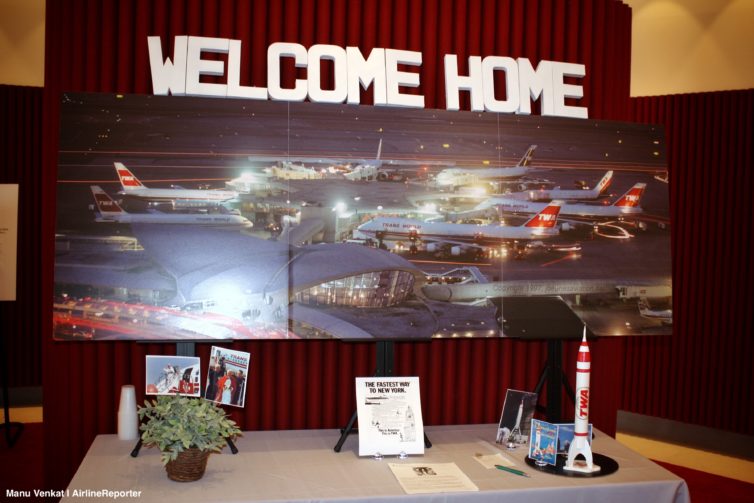
Read on for a recap of the weekend and an insider look at the TWA Hotel, which — spoiler alert — is everything an AvGeek would want it to be.
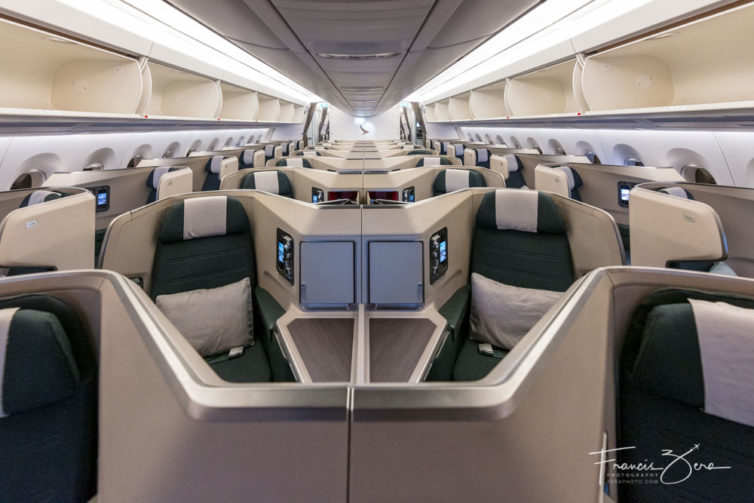
Cathay’s business class seats are very well thought out
Cathay Pacific’s (CX) business-class product is legendary, and that reputation is well deserved. I recently got to try the service in an Airbus A350-900 on their relatively new Seattle-Hong Kong route, which began last spring. You may have heard a bit about the social unrest in Hong Kong of late; travelers’ concerns about those public protests have led to decreased bookings for all airlines serving Hong Kong. That issue is most likely what led to my being bumped to business from premium for the return flight, because the plane was surprisingly lightly loaded. But, that means I got to enjoy biz class both ways, so you’ll hear no complaints from me.
-
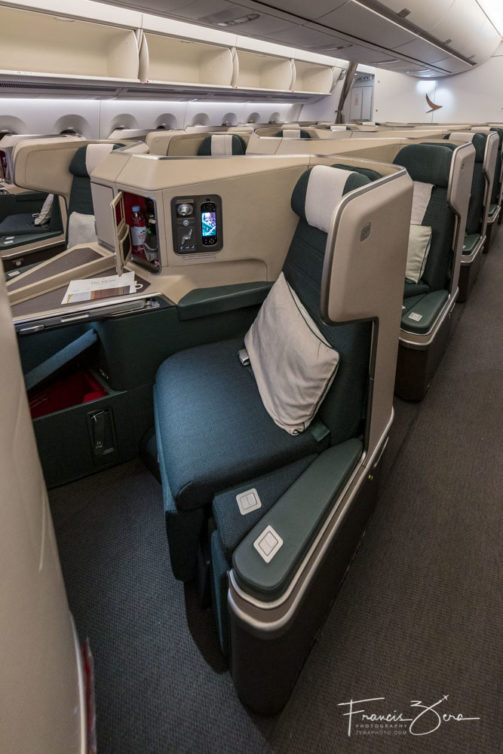
-
Seat 15D
-

-
CX’s A359 seating chart
-
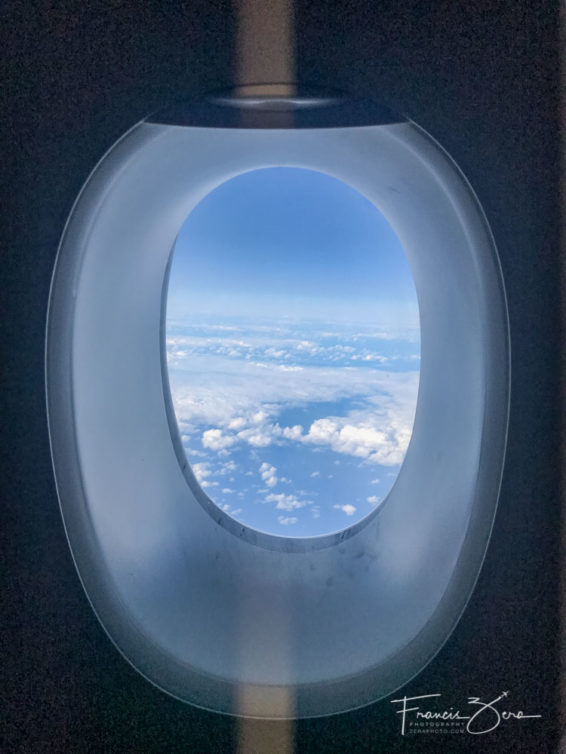
-
Love those big windows
First off, I’ll admit to a bias – I really like the Airbus A350. This was my second round-trip long-haul flight on one this year, and both flights were very pleasant. My first-ever A350 flight was in April 2019 with French Bee, which as a budget airline configures their planes quite differently than Cathay Pacific.
The lower cabin pressurization altitude, large windows, and wide cabin all make for a great flight experience, even in 10-abreast economy, let alone CX’s stellar business-class seats. And I love the A350’s window in the loo – having natural reading light while you tend to business is awesome.
Anyway, here’s the review…
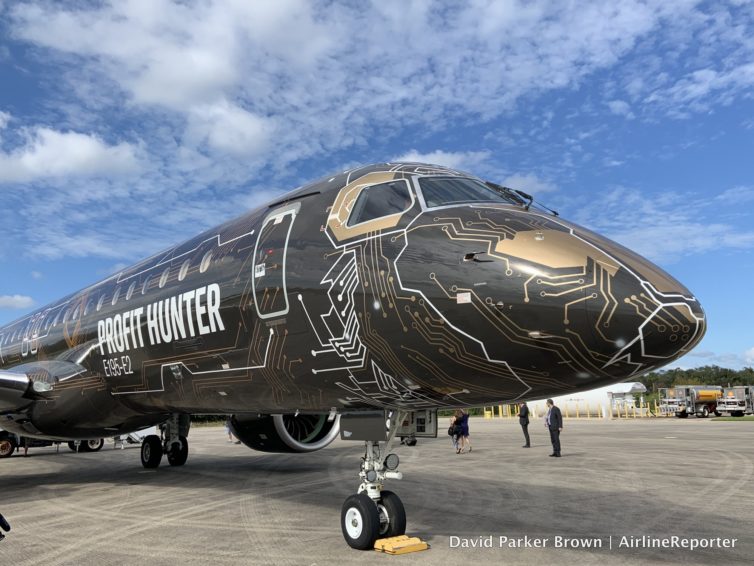
Wasn’t really sure what “Tech Lion” meant until seeing the design up close!
If you have been reading the site for a while, you know that I don’t take as many trips as I used to life priorities have just changed. When Embraer recently reached out to invite me down to fly on their E195-E2 aircraft, I was all in. ’œBut David, didn’t you just fly their E190-E2 Sharkjet about a year ago and don’t you always complain about how often you fly the diagcon from Seattle to Florida?’ Wow, you do read the site quite a bit and you are right’¦ on both accounts.
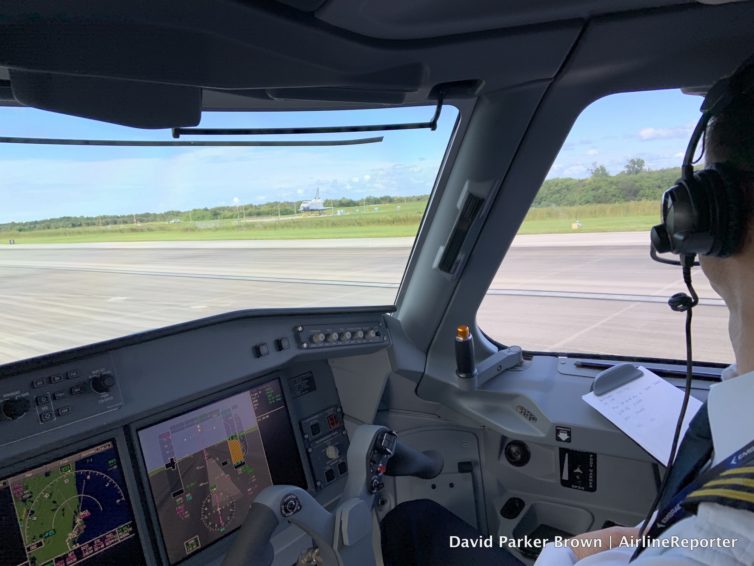
You don’t get to taxi often and see a Space Shuttle!
First off, I was going to be able to fly the Tech Lion vs the Sharkjet this time… meow! Secondly, as part of the media flight, we flew into the Kennedy Space Facility (KTTS), got a VIP tour, and had lunch with an astronaut (Tang drink included). And if that wasn’t enough, I was able to ride jump seat while taking off from KTTS. Yes, this was going to be worth heading down to Florida again to hang out with the fine folks at Embraer, and I was very grateful that I had an invite!










